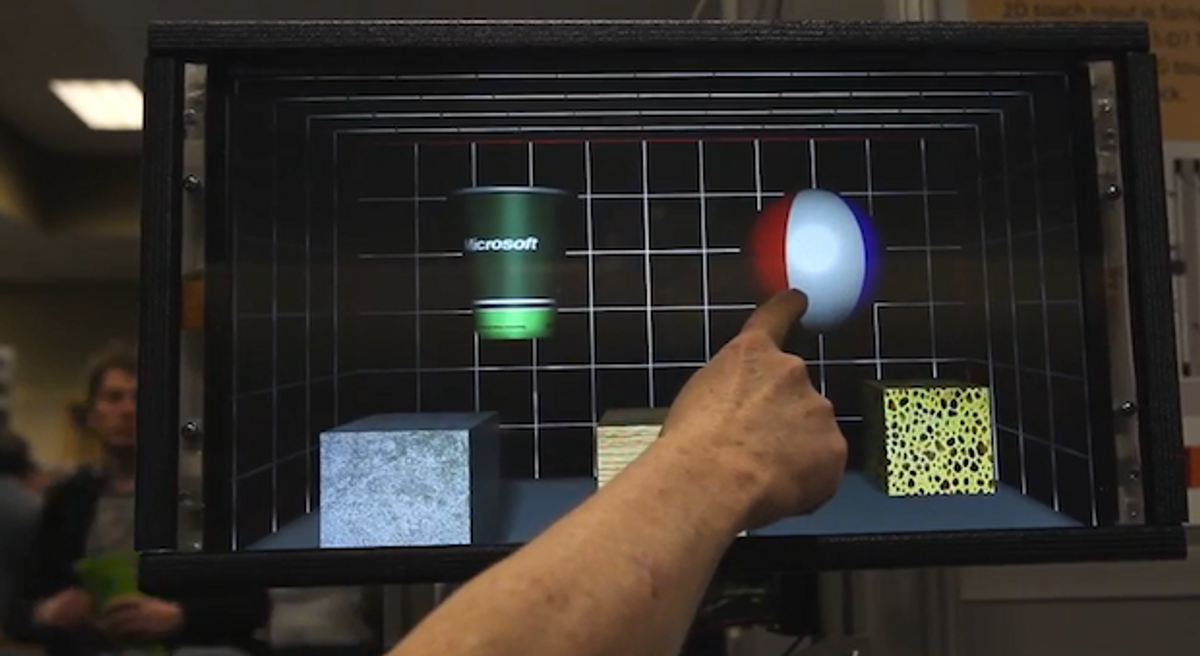Touch screens are nothing new, but this prototype from Microsoft uses a robot-mounted display to do something surprising: touch back.
Early this year at TechFest, Microsoft Research showed off a number of cool new user interaction applications. One of them is a prototype of a haptic feedback touch screen called TouchMover. The company is preparing an announcement with more details about the technology, but here's a sneak peak.
The robotic system behind the curtain pushes back with a pressure that reflects the physical properties of virtual objects on the screen. A granite block in a 3D playground is harder to move than a wooden block, while plastic beach balls are light and, as you move your finger around it, you can feel its "roundness." I got a chance to try it, and it's a little freaky to use, but remarkable.
Researchers uploaded a full set of MRI brain scans and demoed how doctors might scroll through them and annotate specific slides. And with some additional programming, the researchers could also make the TouchMover provide haptic feedback based on the material properties and texture of the skull bone and pulpy brain tissue, making the screen feel like palpating an actual brain.



